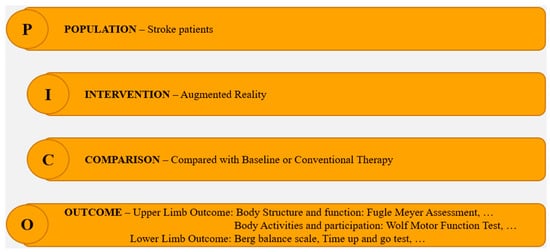
Applied Sciences | Free Full-Text | Effectiveness of Augmented Reality in Stroke Rehabilitation: A Meta-Analysis
Augmented reality (AR)-based rehabilitation shows potential to improve upper and lower limb function after stroke. This study aims to review the effect of AR technology in the recovery of the upper and lower limb function in stroke patients. Published randomized controlled trials and observational investigations with adult stroke patients were retrieved from five electronic databases to analyze the effect of the AR systems in improving motor function and balance and gait function for stroke patients. The treatment effect was estimated by standardized mean difference (SMD) and 95% confidence interval (CI) using a random effect model for motor function outcomes at the body structure and function, body activity and participation level of the International Classification of Functioning, and balance and gait outcomes. In total, 13 investigations (9 for the upper limb and 4 for the lower limb) were identified. AR demonstrated a significant influence on the upper limb function (SMD = 0.657; 95% CI, 0.287 to 1.026; p = 0.000) and the lower limb function (SMD = 0.52; 95% CI, 0.039 to 1.001; p = 0.034). The present analysis suggests that AR applications could offer options for increasing treatment intensity and promoting motor recovery after a stroke. This approach can be used with the conventional rehabilitation methods as a new intervention for recovering upper and lower limb function.
This content was originally published here.


